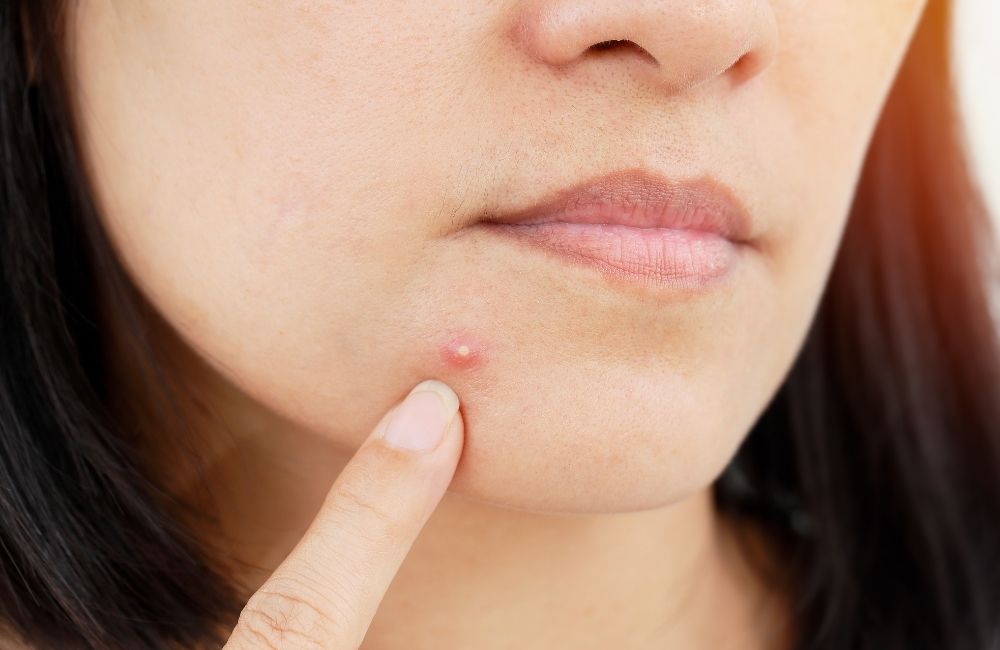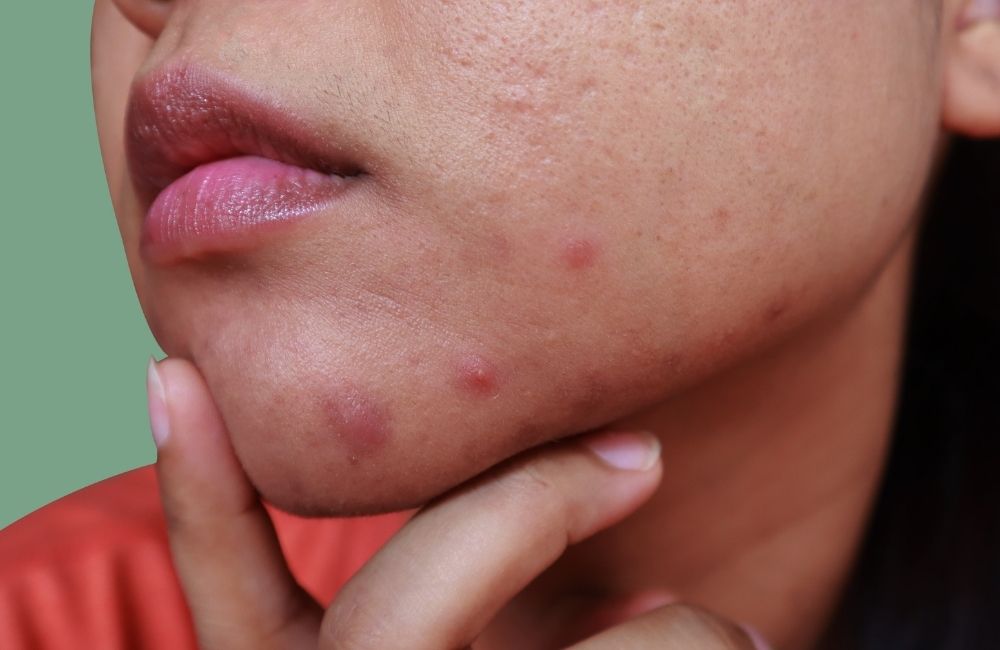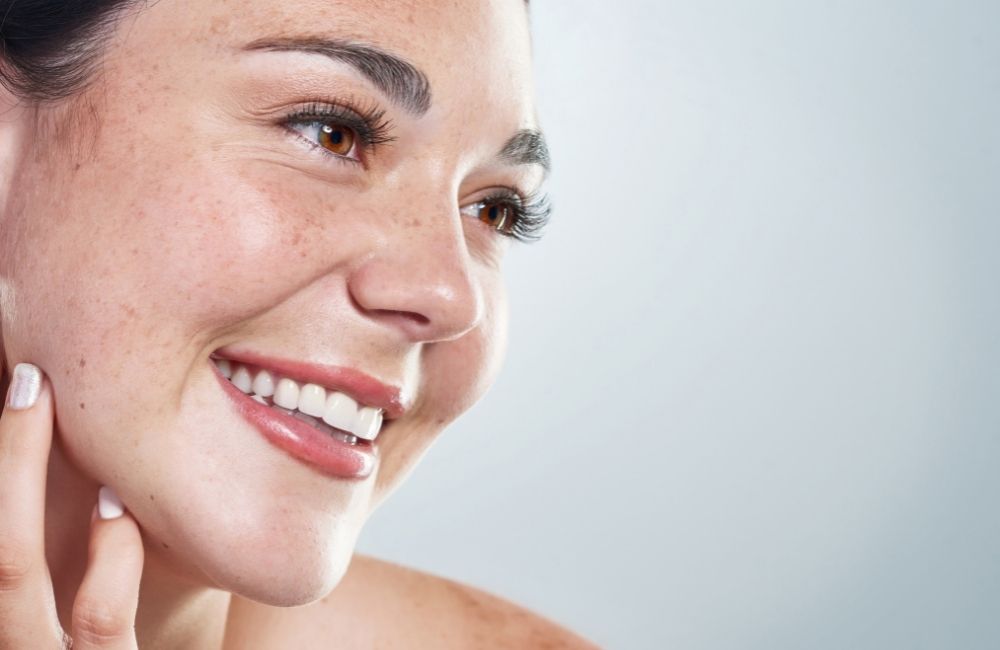Stress and hormonal acne are never a good combination. It can flaw you in ways that target both your skin and self-esteem. You never seem to look good enough, no matter how nice your outfit is because every glance in the mirror hurts your self-confidence.
While hormonal acne, or acne to medical practitioners, is most prevalent among adolescents, this hormonal skin condition can affect almost anyone. There are many resources online for how to stop hormonal acne, but no foolproof solution is available.
In the United States, acne affects up to 50 million people annually. Research has found that approximately 50% of women in their 20s suffer from breakouts. About 25% of women between the ages of 40 and 49 also experience acne. Globally, both statistics show that several millions of women worldwide are dealing with acne at the same time.
Fortunately, we can treat hormonal acne with the right tweak to your skin care regimen and a proper combination of safe, tested medications.
Next, we will examine the causes and symptoms of hormonal acne extensively and then discuss some dermatologically tested and approved options for handling it.

First, let’s talk about what hormonal acne is.
Contents
What is hormonal acne?
Hormonal acne is a skin disorder that mostly affects the T-zone (forehead, nose, and chin), cheeks, and along the jawline. The skin’s sebaceous glands become a little overproductive, drowning your pores and hair follicles in sebum (the oil that keeps your skin fresh and lubricated) and causing them to clog up with dead skin cells. The clogged pores and follicles make the environment, your face, ideal for acne-causing bacteria known as Propionibacterium acnes.
Hormonal acne causes skin blemishes that can appear in the form of blackheads, whiteheads, or cysts. Cysts are the most serious form of hormonal acne, and traditional OTC and topical treatments don’t work because they form underneath the skin’s surface, where these treatments cannot penetrate.
What does hormonal acne look like?

Hormonal acne usually appears on the lower part of the face, in the lower part of the cheeks, and along the jawline. Blackheads, whiteheads, pimples that come to a head, or cysts may be signs of hormonal acne in some people.
Why do I have hormonal acne?
Anyone can get hormonal acne, but most people with it are women, pregnant women, and women experiencing menopause.
Hormonal fluctuations cause an increase in sebum production which leads to hormonal acne. These influxes are attributed to an increase in androgen (male sex hormones like testosterone) levels within the body system.
Several factors may contribute to hormonal imbalance in adult women, and they include:
- Family history of acne
- Hormonal changes in women during menstruation, pregnancy, menopause, or after discontinuing birth control
- Polycystic Ovarian Syndrome (PCOS)
- Men receiving testosterone treatment
- Medication side effects, such as steroids
- Stress
- Sleep deprivation
- Use of pore-clogging hair and skincare products
While you cannot control some causes, you can do something about stress, insufficient sleep, and comedogenic products.
How Hormones Contribute to Acne Formation
The major contributory factor behind hormonal acne is the androgen hormone testosterone.
Women typically undergo hormonal changes during menstruation and pregnancy. During these times, the body produces a higher amount of androgens. Those with a genetic vulnerability to testosterone are more likely to develop hormonal acne.
Hormonal acne and Menopause
Menopause typically starts in a woman when her reproductive hormone production begins to naturally decline, resulting in a drop in estrogen levels or a boost in testosterone levels. In some women, this slight change in hormonal levels initiates menopausal acne.
Most women enter menopause in their early 40s to mid-50s, and during this period, estrogenic hormone levels dip, causing the glands to manufacture more sebum.
Women undergoing hormone replacement therapy (HRT) aren’t off the hook, either. The introduction of a foreign and synthetic hormone, progestin, in the body to replace depleted estrogen and progesterone can cause your skin to react and have breakouts.
Most of the time, though, cases of menopausal hormonal acne are mild to moderate and easily rid of using natural or over-the-counter treatments and medications.
What can I do to reduce my risk of hormonal acne?
Even though hormonal acne can be difficult to avoid, it is possible to minimize the risk by following these tips:
- Reduce stress by adopting healthy habits such as getting more sleep and eating healthily.
- Avoid skincare products that clog pores.
- Discuss your treatment options with a healthcare provider if acne persists.
Hormonal acne: Symptoms and Severity
Hormonal acne is classified according to its degree of graveness: mild, moderate, or severe.
- Mild acne often comes out as blackheads and whiteheads. They usually don’t require medical attention and rarely exceed 30 comedones (nonsuppurative blackheads and whiteheads), papules, and pustules (suppurative pimples).
- Moderate acne is slightly more serious, characterized by both inflamed and non-inflamed lesions. Papules, pustules and comedones range from 25 to 100.
- Severe acne involves a densely outspread variety of painful, inflamed lesions, pustules, and cysts, some of which can cause scarring. Severe hormonal acne is the most serious form of acne, and it has a heavy impact on a person’s visual aspect and self-esteem. Prescription treatment is required to tackle this class of acne.
How to Stop Hormonal Acne: Treatment options

In case you’re wondering how to get rid of hormonal acne, thankfully, it is highly treatable no matter how severe it is. The hormonal acne treatment options depend on how severe your acne is.
With the help of expert opinions provided by accomplished dermatologists, we have put together a selection of tested treatments and lifestyle adjustments to eliminate even the most stubborn cases of hormonal acne.
Following these hygienic tips can also help you prevent infection after treatment.
- Refrain from using makeup. We know it’s scary. It’s in your skin’s best interest, we promise. If you must, choose water-based and non-comedogenic brands. Make sure you don’t overdo it.
- Use mild soaps or facial cleansers. Wash gently twice a day or after sweating.
- DO NOT pick at, scratch, or scrape your zits. Doing so will expose your pores to bacteria, worsen the acne, and likely cause inflammation.
- Harsh scrubs and exfoliants are a no-go during an acne outbreak.
- Hot and humid weather causes excessive sweating, which can worsen acne. On days like this, spend as little time as possible outdoors.
- Take a shower right after a workout session to get all that sweat out of your skin.
- Consume a healthy diet that is low in refined carbohydrates and sugars.
Before we delve into hormonal acne treatment options, please note that there is no magic fix. These treatments have positive reviews, but it could take several weeks for results to become visible. That said, let’s get to it!
For mild acne: Topical treatments
Mild acne doesn’t need special attention to treat. Under normal circumstances, the tips above should be enough to control it. For cleansing, use an antibacterial face wash. Topical OTC remedies containing benzoyl peroxide and salicylic acid are gentle yet effective methods to treat a mild case of acne. Benzoyl peroxide attacks the bacteria while salicylic acid keeps your pores clean.
Retinoids and retinol serum also work great for mild to moderate hormonal acne. They are both derivatives of vitamin A and work by speeding up the rate of your skin’s growth, promoting faster cell turnover. This way, dead skin cells are flushed, and inflammation is reduced drastically. Retinoids also stimulate collagen replacement. Tretinoin is a well-known topical retinoid.
Limit your skin’s exposure to UV light when using topical treatments, as it increases the risk of getting sunburn. Always keep a broad-spectrum, SPF-30, or higher sunscreen within arm’s reach. Even when not using topical treatments, sunscreen comes in handy during the day.
Moderate to severe hormonal acne
These are more stubborn forms of acne that are liable to cause some scarring. Healthcare specialists often prescribe a combination of oral and topical treatments to regulate moderate and severe acne.
Antibiotics: These drugs battle bacterial infections and can be very potent against moderate to severe cases. Antibiotics and retinoids combined can make quite the acne-fighting tag team. Examples include tetracycline, erythromycin, clindamycin, and doxycycline.
For the most severe hormonal acne cases that antibiotics and topical products can’t correct, the oral medications below are better suited for the job as they are far more powerful.
Isotretinoin: A vitamin A derivative like tretinoin but more powerful.
Spironolactone: Trusted for over 3 decades in treating acne, spironolactone is an androgen receptor blocker that reduces sebum production in the glands. The drug is effective at doses between 25mg and 50mg twice daily.
If you are sexually active, it is crucial to use highly effective birth control methods, because pregnancy is not an option during the treatment phase. Isotretinoin and spironolactone are drugs that potentially cause serious birth defects.
Other natural OTC alternatives and remedies include the use of acne-fighting vitamins and minerals topically or orally. These acne-fighting nutrients include vitamins A, C, D, zinc, and biotin.
Vitamins A and C both have incredible anti-inflammatory properties, which reduce the size and redness of existing pimples and help reduce the effect of acne wounds and scarring. Vitamin A also boosts skin cell turnover and its antioxidants help rid the skin of harmful free radicals. The effects of vitamins A and C on hormonal acne are best observed when used topically.
Vitamin D is an immune support vitamin with antimicrobial properties, and like vitamin A, helps fight the bacterial effects of acne on the skin.
Zinc is a natural DHT blocker. This means that in addition to maintaining the epidermal balance of collagen and keratin, zinc also helps reduce the production of sebum in the skin, according to this review. The reduced production of oil and consequent reduction in keratinocytes help to reduce blocked pores and clear up acne over time. Since zinc is also good for wound healing, it could help with inflammation, redness, and scarring.
Some people believe that biotin may trigger acne in some cases, but there is very minimal evidence backing this theory. On the contrary, biotin and collagen supplements are known to have a positive impact on the skin, especially when inculcated into a skincare routine. Biotin and collagen may help improve comedones (whiteheads and blackheads) and control the flaking and irritation that sometimes occur with the use of retinoids.
Wellabs offers supplements that blend these acne-battling nutrients in proportions that are most beneficial to the body. Take a look at some of these products here.
With these treatments, now you know how to stop hormonal acne for good. Discuss these options with your dermatologist to fix up a regimen specific to your needs.
